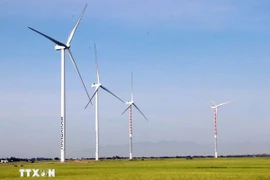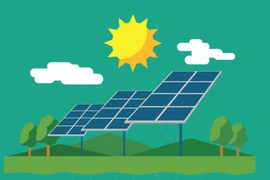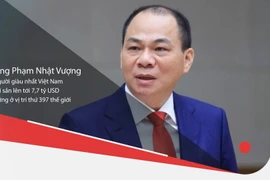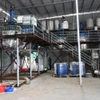Hanoi (VNS/VNA) - The recent approval for Vietnam’s eighth national power development plan (PDP8) has heated up discussions around business strategies of energy giants in the race to gain advantages in energy transition towards the country’s net-zero goals.
Approved in early April, the plan sets the foundation for the transition of traditional power sources such as coal-fired to cleaner energy.
Renewable energy will make up for 30.9-39.2% in 2030 and 67.5-71.5% in 2050.
Under the PDP8, on-shore wind power will grow at an annual compound rate of 25% in the 2021-30 period and 6% in 2030-50 to account for 14% and 13% of the country’s total power capacity, respectively. Offshore wind power is expected to reach 600MW by 2030 then grow at 15% by 2050 to account for 16% of the total’s power capacity.
LNG-fired power will account for 27% of the total power capacity by 2030 and 15% by 2050. Besides, biomass power is expected to reach 1,088MW and waste-to-energy 1,182MW.
The development of solar power is slowing down after a robust growth in the 2020-21 period, but is expected to make up for 33% of the total power capacity.
Companies are planning investments in renewable energy to capture the opportunities from the transition toward net-zero goals.
Refrigeration Electrical Engineering Corporation (REE) plans to focus on wind energy. Its wind power plant in Trà Vinh is operating at 90% of its capacity.
Seeing wind power a spearhead in Vietnam’s energy transition process, REA will continue to seek cooperation with foreign partners with experiences and financial capacity.
PC1 Group Joint Stock Company will focus on optimising the operation of its existing wind power plants.
Bamboo Capital also put wind power at the centre of its energy business. BCG Energy in charge of managing the energy business of Bamboo Capital, now owns eight onshore wind power projects with a total capacity of 925MW. The company is also hastening the implementation of on-shore and off-shore wind power projects with a total capacity of 550MW, including Dong Thanh 1, Dong Thanh 2 and Khai Long which are expected to be put into operation within this year.
With solar power, although there is not much room left for development, it still remains attractive and along with wind power, is considered a growth driver for Bamboo Capital.
The documents at the shareholders’ meeting of Bamboo Capital this year pointed out that the first phase of 21MW Krong Pa 2 solar project is completed. The price negotiations for Krong Pa 2 and 114MW Phu My are set to be completed this year.
BCG Energy is also implementing another 23 rooftop solar power projects with a goal of doubling the total capacity by the end of this year.
Sao Mai Group set the goal of doubling the revenue from renewable energies in 2024 to reach 1 trillion VND per year with the focus on developing new solar and wind power projects.
Sao Mai is operating 210-Mwp An Hao solar plant in Tinh Bien district, An Giang province and 50-Mwp Euriplast Long An in Duc Hue district, Long An province.
Helio Energy planned to buy a maximum of 60% of stakes of SD Truong Thanh Joint Stock Company, developers of Thuan Minh 2 solar power project with a capacity of 50 Mwp in Binh Thuan province.
REE Chairwoman Nguyen Thi Mai Thanh said that investment in solar power requires careful consideration because of the Government’s intention of offering zero Vietnamese dong pricing for excessed rooftop solar power.
Thanh said that the company is starting to get into hydrogen, but more consideration is needed.
Bamboo Company is eyeing waste-to-energy with a portfolio of five plants in Cu Chi, Long An, Kien Giang, Hue and Ha Nam. The company planned to build the first waste-to-energy plan in Cu Chi, HCM City this year which will have a total investment of 5 trillion VND to treat 2,000 tonnes of waste per day and generate 40MW.
The plant in Long An will have an investment of 1.586 trillion VND to treat 500 tonnes of waste per day, equivalent to a capacity of 10MW.
Le Xuan Nghia, a member of the National Financial and Monetary Advisory Council, pointed out that one of the major challenges to renewable energy development is the infrastructure system and high costs.
Vietnam needs a comprehensive strategy, which might include the foundation of environment standards, appropriate infrastructure development and policies to encourage investments from both domestic and foreign sources.
According to VnDirect Securities Company, Vietnam has a large potential for wind and solar power development. However, it is necessary to invest in the transmission and storage systems and speed up the construction of the grid systems in the context that renewable power sources are increasing rapidly./.
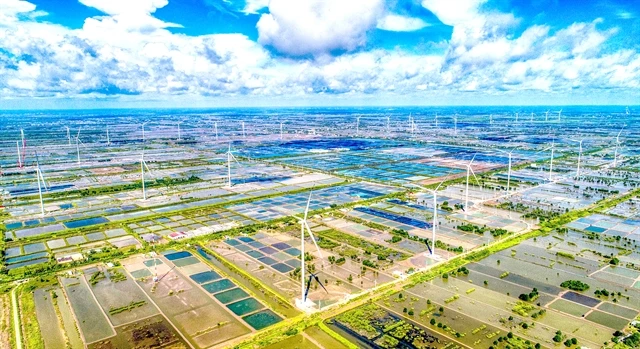
See more

Lumitel – A bright spot in Vietnam-Burundi collaboration
After a decade of operations, Lumitel has become the leading telecommunications provider in Burundi and one of the largest contributors to the Burundian government's budget, providing stable employment for over 60,000 workers and indirectly creating around 100,000 jobs.
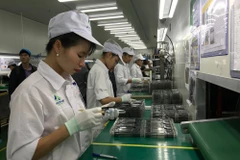
Vietnam’s trade shines as a pillar of economic growth
This robust performance, representing an additional 12 billion USD compared to the same period last year, underscores trade's resilience amid global economic uncertainties.
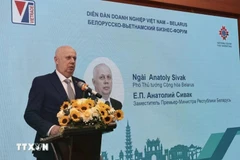
Ample room remains for Vietnam - Belarus trade cooperation
To further develop the Vietnam-Belarus economic and trade relationship, it is essential to enhance trade promotion and investment initiatives such as trade fairs, forums, thematic workshops, and trade connections, which serve as an important bridge for businesses from both sides to meet, connect, and seek cooperation opportunities.
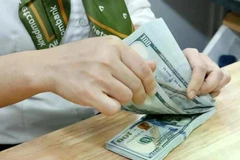
Reference exchange rate up 3 VND on April 3
The State Bank of Vietnam set the daily reference exchange rate for the US dollar at 24,854 VND/USD on April 3, up 3 VND from the previous day.

Vietnam, Laos boost trade at Savannakhet expo
Vice Governor of Savannakhet Saensak Soulisak highlighted the exhibition’s role in expanding trade collaboration, enabling businesses to connect, share experience, and explore investment prospects. He also noted its significance in promoting local products to a wider market.

Vietnam’s seafood exports surge to 2.45 billion USD in Q1
Industry insiders pointed to stable raw material prices and a strategic shift towards higher-value processed products as key factors underpinning the strong performance of the two top earners -shrimp and tra fish.
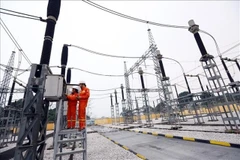
Vietnam sets new framework for retail electricity pricing
The decision, signed on March 31, sets the maximum retail electricity price at 2,444.09 VND per kWh (0,095 USD), while the minimum price is set at 1,826.22 VND per kWh.

Vietnam Expo 2025 opens, spotlighting digital transformation, innovation
This year’s edition, themed “Step together in a digitised world,” has attracted around 400 businesses from 18 countries and territories, with over 500 booths. Alongside traditional networking, it introduces online business-to-business (B2B) matching, enabling year-round connections.
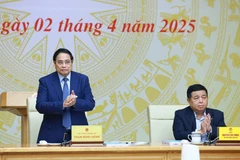
Private sector encouraged to join major national programmes, projects
It must fully unleash the productive capacity and resources of the country through the private sector; mobilise all private resources for national development; harness the effectiveness of internal forces, including human, natural resources, history, and culture, while effectively combining them with external resources such as capital, technology, human resources, and management experience, he said.

Annual Vietnam-Cambodia business dialogue held in Cambodia
The annual business dialogue in Cambodia attracted around 150 delegates, including Vietnamese businesses and Vietnamese-origin companies operating in Cambodia across various sectors such as finance, banking, insurance, telecommunications, agriculture, construction, interior design, food services, transportation, logistics, trade, healthcare, and tourism.
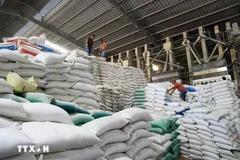
Vietnam-Cuba Business Forum held in Hanoi
Addressing the event, Cuban Ambassador Rogelio Polanco Fuentes affirmed that Cuba will always stand alongside the Vietnamese Government and business community in their efforts to achieve the challenging target socio-economic goals.
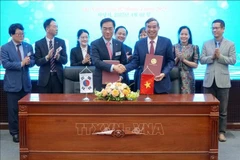
Da Nang, RoK's Pyeongtaek partner in semiconductors, high technology
By the end of 2024, the RoK had invested in 285 projects in Da Nang, with a total registered capital of 382 million USD, ranking among the top five foreign investors in the city.
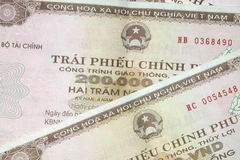
Over 2.54 bln USD raised through government bond auctions
These auctions raised an impressive 65.3 trillion VND (over 2.5 billion USD), an 124% increase compared to February, signaling strong investor confidence in the country's financial stability.
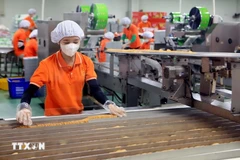
Party official anticipates breakthroughs in private economic sector
With the Politburo set to issue a dedicated resolution on the private economic sector, there should be a reformed approach to action plans, according to Secretary of the Party Central Committee and head of Head of its Commission for Policies and Strategies Tran Luu Quang.
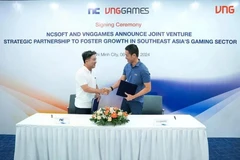
More RoK’s game developers target Vietnam
Over half of Vietnam's nearly 100 million population being gamers and the country's competitive labour costs are among reasons for Korean gaming firms' expanding presence in Vietnam.

Airfares surge ahead of April 30 - May 1 holidays
To regulate the market, the CAAV has taken measures to balance supply and demand on domestic routes and support airlines in enhancing their operational capacity.

Vietnam cuts import taxes on key goods ahead of US tariff announcement
The quick response from Vietnam has won approval from industry leaders, with some considering the tax cuts as a "swift, positive, and timely" move that showcases Vietnam’s goodwill.

Vietnam Airlines marks 10 years of UK route operations
Vietnam Airlines launched its direct UK route in 2011, initially operating from London Gatwick Airport (LGW) before transitioning to Heathrow in 2015, improving connectivity to one of the UK’s major international hubs./.
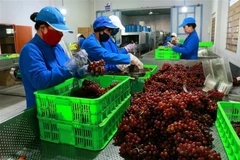
Vietnamese firms embrace green, digital export strategy to meet global standards
Nguyen Dinh Tung, CEO of Vina T&T Import Export Service Trading Co. Ltd., stressed that tougher technical barriers in global markets are creating a level playing field, compelling exporters to prioritise quality and compliance.
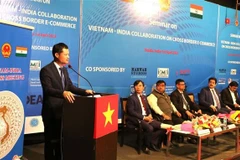
Seminar helps boost Vietnam - India e-commerce cooperation
The seminar, titled “Vietnam - India Collaboration in Cross-border E-commerce,” looked into both opportunities and challenges for Vietnam-India e-commerce cooperation.
